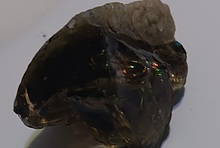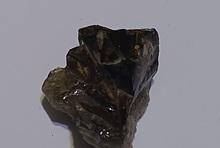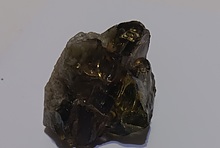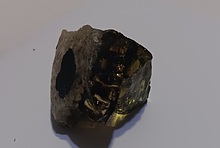Home PageAbout MindatThe Mindat ManualHistory of MindatCopyright StatusWho We AreContact UsAdvertise on Mindat
Donate to MindatCorporate SponsorshipSponsor a PageSponsored PagesMindat AdvertisersAdvertise on Mindat
Learning CenterWhat is a mineral?The most common minerals on earthInformation for EducatorsMindat ArticlesThe ElementsThe Rock H. Currier Digital LibraryGeologic Time
Minerals by PropertiesMinerals by ChemistryAdvanced Locality SearchRandom MineralRandom LocalitySearch by minIDLocalities Near MeSearch ArticlesSearch GlossaryMore Search Options
The Mindat ManualAdd a New PhotoRate PhotosLocality Edit ReportCoordinate Completion ReportAdd Glossary Item
Mining CompaniesStatisticsUsersMineral MuseumsClubs & OrganizationsMineral Shows & EventsThe Mindat DirectoryDevice SettingsThe Mineral Quiz
Photo SearchPhoto GalleriesSearch by ColorNew Photos TodayNew Photos YesterdayMembers' Photo GalleriesPast Photo of the Day GalleryPhotography
╳Discussions
💬 Home🔎 Search📅 LatestGroups
EducationOpen discussion area.Fakes & FraudsOpen discussion area.Field CollectingOpen discussion area.FossilsOpen discussion area.Gems and GemologyOpen discussion area.GeneralOpen discussion area.How to ContributeOpen discussion area.Identity HelpOpen discussion area.Improving Mindat.orgOpen discussion area.LocalitiesOpen discussion area.Lost and Stolen SpecimensOpen discussion area.MarketplaceOpen discussion area.MeteoritesOpen discussion area.Mindat ProductsOpen discussion area.Mineral ExchangesOpen discussion area.Mineral PhotographyOpen discussion area.Mineral ShowsOpen discussion area.Mineralogical ClassificationOpen discussion area.Mineralogy CourseOpen discussion area.MineralsOpen discussion area.Minerals and MuseumsOpen discussion area.PhotosOpen discussion area.Techniques for CollectorsOpen discussion area.The Rock H. Currier Digital LibraryOpen discussion area.UV MineralsOpen discussion area.Recent Images in Discussions
Techniques for CollectorsHow did he do that? Diamonds vs CZ

15th Sep 2009 02:12 UTCJenna Mast
I wasn't aware of the identities when they were first given to me. They look pretty much the same. They seemed to have the same shade, they both had sharp facets and sparkled quite nicely. The only differences I could see under close examination was one had visible flaws which gave it the effect of seeming more faceted, while the other did not. I assumed the one with the flaws was an actual diamond, and this was confirmed when I later found the tag that came with it.
I was skeptical of the flawless stone based only on the fact that such a flawless diamond of that size seemed too unusual. Out of sheer curiosity I took it to a jewelry who's family had been in the business for generations, and he was able to tell me in about five seconds looking through an eye loop in the dim light that it was cubic zirconia.
My question is, how did he do that? What is it that tipped him off?

15th Sep 2009 05:25 UTCBen Kirchner
I might be wrong though; there may be some obvious trick, or something not so obvious but a way to tell absolutely. Check out www.gemologyonline.com on the forums... Those guys have amazing knowledge about gems! Good luck :)

15th Sep 2009 06:33 UTCJenna Mast
Yes, sorry, I did mean "was". :-)

15th Sep 2009 06:59 UTCDonald Vaughn
the facet point in the wrong direction and the edges of the facets are not as clean also cz being synthetic
lacks inclusions.
to my untrained eye a CZ always seem's to be a brighter more colorful sparkle with more of the "Rainbow" effect than a diamond which seemed more white.

15th Sep 2009 08:39 UTCjacques jedwab
A pocket instrument based on that propriety is sold, e.g. by KRANTZ.
16th Sep 2009 17:59 UTCJim Ferraiolo
CZ has a higher dispersion that diamond, and the refractive index of CZ is lower than diamond.
16th Sep 2009 21:43 UTCRob Woodside 🌟 Manager
16th Sep 2009 23:21 UTCAdam Kelly
If out of the mounting, cz's weigh about twice as much as a diamond the equivilant size.
Cz's don't have inclusions, and yes, years of looking at them helps to.
AK

5th Oct 2009 03:36 UTCJoseph Taggart, Jr.
I can't swear this is true, but a jeweler I met said that one of the cheapest ways he knew of for separating Diamonds and CZs was to put them in water. He said that the diamond "sparkles" even under water. I assume this has to do with Jim's comment about refractive index.
5th Oct 2009 17:04 UTCJan Styer-Gold
Jan
5th Oct 2009 18:36 UTCRob Woodside 🌟 Manager
5th Oct 2009 19:16 UTCJan Styer-Gold
No puzzle... Sorry, I should have been more specific. This property mainly applies to faceted diamonds. Some irregularly shaped rough diamond crystals will also exhibit this property. I am able to see through and read through my octo crystals too...in or out of matrix. :)
Jan
5th Oct 2009 22:20 UTCRob Woodside 🌟 Manager

6th Oct 2009 00:17 UTCAnonymous User
CZ
Dispersion: 0.058-0.066. RI: 2.15-2-18. Density: 5.34-6.0.
Diamond
Dispersion: 0.044. RI: 2.417. Density: 3.515.
The thermal diamond probe is often used to compare thermal inertia, which is much higher in diamond than CZ or other simulants. This is done quickly without taking out of the setting.
The "read through" test is done with unmounted stones. They are placed table down on a printed sheet. The reason that this may be helpful is that a diamond is supposed to be cut to ideal proportions. This means that the pavillion facets are properly angled to allow them to reflect nearly all light entering the table back out the table. This angle, called the critical angle, varies with the refractive index of the stone. Therefore, a CZ cut to or close to ideal diamond proportions (which they usually are to look like they are cut correctly) would be cut with the wrong critical angle for CZ, and therefore not return as much light. Hence the read through. This same effect may be noticeable when viewed set from above as a dark zone - where light is not reflected from the pavillion and is allowed to leak out.
I'm not a jeweler. Perhaps one can correct or expand this?
6th Oct 2009 00:35 UTCRob Woodside 🌟 Manager
When Bob Downs was post docing in Washington, he got into the Blue Room at the Smithsonian where they have a fist sized diamond. Diamond has the largest heat conductivity of any material and it sucked the heat out of his hand when he held it. He said that's why they call it "ice" and not because of its appearance.

6th Oct 2009 01:04 UTCAnonymous User
According to Arem (1987), diamond has a thermal conductivity of 1.6-4.8 cal/cm degrees C sec, while other gems vary from 0.215 (SiC) to 0.0012 (lead glass). Gold is 0.707, and silver is 1.00. Interestingly, Ag 69%/ Au 31% (weight) is 0.237. (Makes me wonder if you can judge karat by thermal conductivity.) I don't know if diamond has the highest conductivity, but it has to be up there.
6th Oct 2009 01:17 UTCRob Woodside 🌟 Manager
8th Oct 2009 01:48 UTCAdam Kelly
And as I was told, you are right, that's the reason it's called ice.
AK

8th Oct 2009 03:39 UTCJohn A. Jaszczak Expert
The results were even higher thermal conductivity! (Less phonon scattering due to isotopic
impurities). A remarkable property since pure diamond is
an insulator. High thermal conductivity for metals (like copper) comes from the electrons. Diamond
has about 4 times better thermal conductivity at room temperature that copper. One reason is
that I think diamond is the most dense material in terms of atoms per volume. I think perhaps only
graphite has stronger bonds, but only in the graphene plane.
John

13th Nov 2009 04:34 UTCJohn Attard Expert
The isotopically purified carbon you refer to is essentially pure carbon-12 in other words we are talking about carbon-13 depleted. Natural carbon is approx 99% C-12 and the rest mostly C-13 (and tiny amounts of the radioactive C-14). Yes the C-13 depleted diamond acts like you say and in addition it has markedly superior laser properties (quantum mechanical arguments) over regular diamond.
Back to thermal conductivity. Think about heat as atomic motion. Conductivity is due to atoms hitting neighbors and passing on motion to them on the whole going from high temperature to low. Not only does diamond have a lot of atoms per unit volume but in any diamond the atoms are all bonded together in a strong tetrahedral arrangement, a diamond is essentially a SINGLE molecule! The strong 3D structure accounts for extreme hardness. As for the electrical insulator properties? All its electrons are tied up unlike metals or graphite so no electrical conductivity.

16th Dec 2009 03:55 UTCAlfredo Petrov Manager
21st Apr 2010 10:14 UTCJamey Swisher
Also, not all CZ are cut to wrong angles. A CZ can still be cut to the "Ideal" cut and be in the correct angles for CZ. Ideal cut has nothing to do with angles, but rather proportions. Angles vary with every gemstones material, natural or synthetic. The catch is most CZs are either commercially cut or machine cut with lasers and not actually precision faceted, but that does not mean there are no precision faceted CZs, because many faceters cut designs in CA< I am one of them, lol, always test cut in CZ or other cheaper synthetic prior to possibly wasting expensive natural rough, and of course those CZ designs still get sold! But even commercially cut CZs have varying qualities! For example, Signity CZs are typically quite well cut and polished, unlike many other low end commercial cut CZs.
A few key things in faceted diamonds would be inclusions, naturals(areas or natural diamond crystal not faceted or polished on the stone, often near the girdle), etc. CZs will NOT have these.
With the progress into synthetic diamonds and HPHT treatments it is getting harder and harder to ID natural untreated diamonds!! In fact, so difficult, it is best NOT to accept/purchase a colored diamond anymore unless it comes with an origin of color report!!! Otherwise don't buy it as odds are it is treated to get the color, either coated or irradiated. There are also synthetics now that apparently can trick many diamond testers as well too!
Still one of the easiest way to ID a diamond from other materials, not synthetics though, is a simple specific gravity test, as long as the stone is loose of course.
But many gemologists and/or jewelers with lots of years experience can ID many a gemstone, diamond or colored, with simple magnification. Now, of course, you won't find a good one willing to do a valid ID from that alone, they will require other tests to validate what their eyes tell them, if not, it is one you want to run, not walk, away from and find another jeweler/gemo to take care of your needs, lol!!
It got to the point we invested in an Ocean Optics spectrophotometer now just to be able to have that extra power for ID'ing materials and/or treatments as well! Plus it really speeds up color grading as well, lol.

2nd Sep 2010 08:01 UTCcharles kraft
There were two rings, one CZ, one diamond; I was sure I remembered which was which. When he hit the CZ, he looked at if for about 2 or three seconds and decided what it was. When he hit the diamond he said "Someone was in the military in the early 1960s." He was right both times.




Mindat.org is an outreach project of the Hudson Institute of Mineralogy, a 501(c)(3) not-for-profit organization.
Copyright © mindat.org and the Hudson Institute of Mineralogy 1993-2024, except where stated. Most political location boundaries are © OpenStreetMap contributors. Mindat.org relies on the contributions of thousands of members and supporters. Founded in 2000 by Jolyon Ralph.
Privacy Policy - Terms & Conditions - Contact Us / DMCA issues - Report a bug/vulnerability Current server date and time: April 19, 2024 03:09:07
Copyright © mindat.org and the Hudson Institute of Mineralogy 1993-2024, except where stated. Most political location boundaries are © OpenStreetMap contributors. Mindat.org relies on the contributions of thousands of members and supporters. Founded in 2000 by Jolyon Ralph.
Privacy Policy - Terms & Conditions - Contact Us / DMCA issues - Report a bug/vulnerability Current server date and time: April 19, 2024 03:09:07











